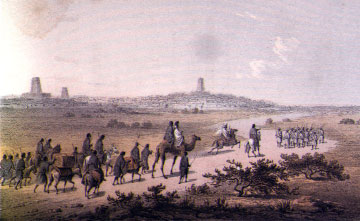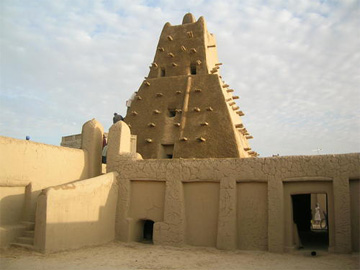Timbuktu


Founded in the fifth century on the edge of an ever-encroaching Sahara Desert, the storied city of Timbuktu served as a gateway for ideas, people, and trade goods linking distant cities in North and West Africa. Its central location connected boat traffic along the Niger River with overland routes from the Gold Coast to the Mediterranean Sea.
At its height in the sixteenth century, Timbuktu was a leading economic and cultural center that fed one of six major trade routes that crisscrossed the Sahara. From 650 to 1600, nearly five million enslaved people from sub-Saharan Africa were transported through Timbuktu and other desert trading centers for destinations along the Mediterranean Sea, Red Sea, and Indian Ocean.
Timbuktu also served as an intellectual center and an important synapse in the transmission of Islam into West Africa. The city housed famous libraries whose archivists collected and preserved Islamic texts that attracted students and scholars from throughout the region.
For centuries, travelers such as Leo Africanus, al-Hajj ’Abd al-Salam Shabini, and Mahmud Kati recounted their impressions of the city and its bustling marketplaces, narrow streets, and monumental architecture. One nineteenth-century traveler, Wargee of Astrakhan, described a city busy with commerce and vibrant culture. Even long after its peak as a center of commerce, Wargee was impressed by the city’s caravans of Arab traders, who arrived after three-month journeys by camel across the desert with “cotton cloths, clothing, silks, iron, beads, silver, tobacco in rolls, paper, earthenware, and tar,” which they exchanged for “gold-dust, ivory, the teeth of hippopotami, gum, and ostrich feathers.” He noted that slaves were also “a considerable portion of their returns.” By that time, Timbuktu had served as a fertile crossroads of commerce, culture, and ideas for more than fourteen hundred years.






